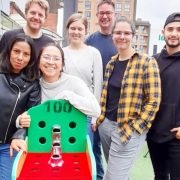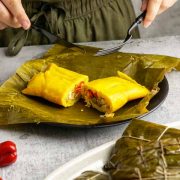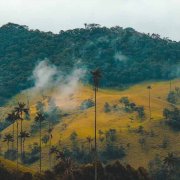What are Colombia’s most unique traditions?
Colombia is a fascinating culture that blends European, African, Middle Eastern, and Indigenous traditions.
We have managed to mix all the influences from those cultures into their food, music, art, and customs in such a beautiful way, resulting in a magnificent and unique culture.
There’s no place like Colombia! We know it might sound not very objective; everyone thinks their country and culture are unique but believe us, there is something special about Colombian culture.
Once you experience visiting or living in Colombia, you will understand!
Some traditions might seem weird, and we are unsure where they came from, but they are within every Colombian, no matter their region or social background.
This article will name just a few of those traditions that make our culture unique.
Unique food & drink traditions
1. Cheese Seems to be ON and IN Everything!
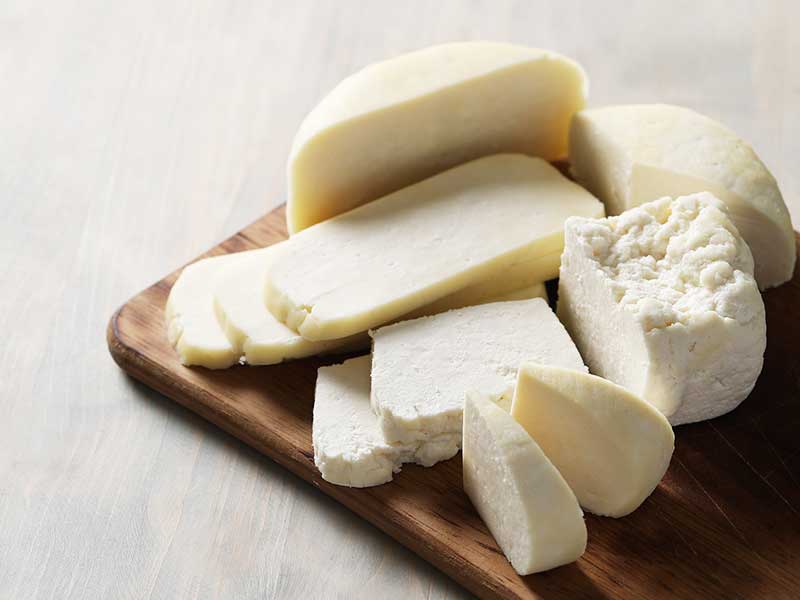
Did you think cheese is only famous in France, Switzerland, or Italy?
Let us tell you something; cheese is a primary product of popular Colombian cuisine. You’ll find cheese in plates and recipes you wouldn’t even imagine.
Here just some examples:
Hot chocolate with cheese (or Aguadepanela with cheese)
It is probably the weirdest good combination for foreigners.
Double cream cheese is added to hot chocolate; it melts and forms a liquid substance. Then, we drink the hot chocolate, and the cheese that remains in the bottom of the cup is eaten with a spoon.
It may seem strange, but Colombians enjoy this delicacy regularly. More so over the Christmas holiday period and in those cold-weather regions.
Fruit salad with cheese
if you think you have only ordered a fruit salad…keep in mind that there’s most probably going to be some cheese on it.
Obleas
It’s (like a flattened waffle cone, served with “arequipe,” jam, and of course, cheese.
Arepas
By now, you might know that one of the most famous Colombian dishes is Arepas. Of course, they come with cheese, either within the dough or on top of the area.
Keep in mind that the cheese is not as salty in Colombia and doesn’t have a strong taste; it’s primarily fresh, soft, and pretty neutral in taste.
Our best piece of advice: give it a try! You will love those famous delicatessens!
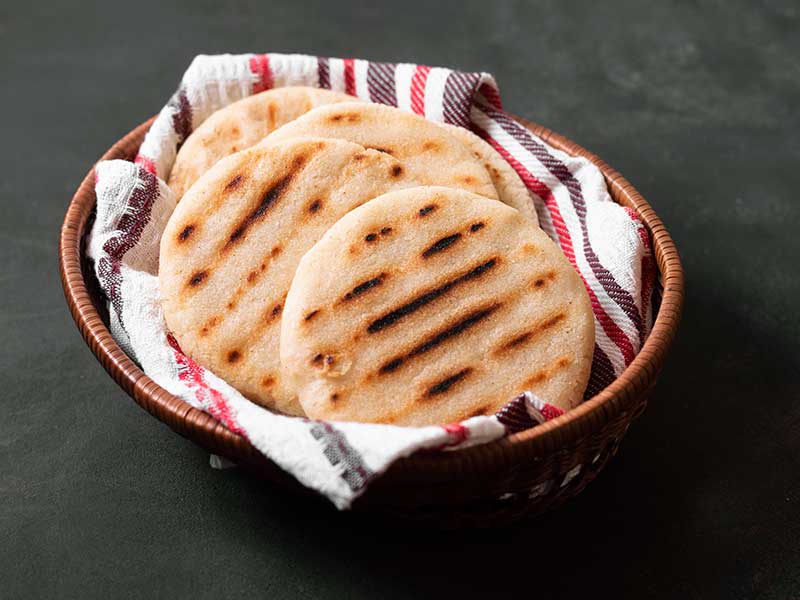
2. Colombian “menú del día” (Meal of the day)
Menú del día might be the most commonly found lunch item throughout the country. However, it isn’t a specific dish per sé, and it’s a popular budget lunch menu.
The Menú del Día costs from 8,000 COP to 18,000 COP ($2.50 to $4.50 USD). It includes a soup appetizer, the main course meal, fresh juice, and dessert.
Other names given to ¨Menú del Día¨are: Almuerzo corriente, corrientazo, Almuerzo Ejecutivo
3. Coffee
How would Colombia be without coffee?
Coffee is a significant part of Colombian culture. Not only because our country produces world-class coffee but also because most locals drink it daily and several times a day.
Yes, some Colombians are not fans of coffee, but we are generally a coffee-drinking culture.
When do we drink coffee?
- When we wake up: early morning ritual
- During the day at work
- After lunch
- During work meetings
- When you are invited to someone’s house
- When catching up with friends
The intake of coffee depends on the person. Some people drink 1-2 cups of coffee a day, while others drink up to 6+ cups of coffee a day.
Other names for coffee: Cafecito, Tinto, Tintico
4. Aguadepanela
Agua de panela or Agüepanela is one of the most popular Colombian drinks. Its literal translation means “panela water” as it is an infusion made from panela which is derived from hardened sugar cane juice.
We drink it either cold or hot, depending on the weather. It is usually drunk as lemonade in warm regions and hot tea in cold areas (with cheese, of course!)
5. Natilla and Buñuelos (The Colombian Christmas combo)
Christmas in Colombia is not complete if you don’t eat “Natilla and Buñuelos.” You can find these two snacks all around the country during the year, but the Colombian tradition is having the combo during the Christmas festivities.
Natilla: it resembles a flan or pudding. Some ingredients include milk, panela, cinnamon sticks, “arequipe” and cornstarch.
Buñuelos: A fried dough fritter (with cheese, of course!)
Natilla and buñelos: The Colombian’s favorite Christmas combo!
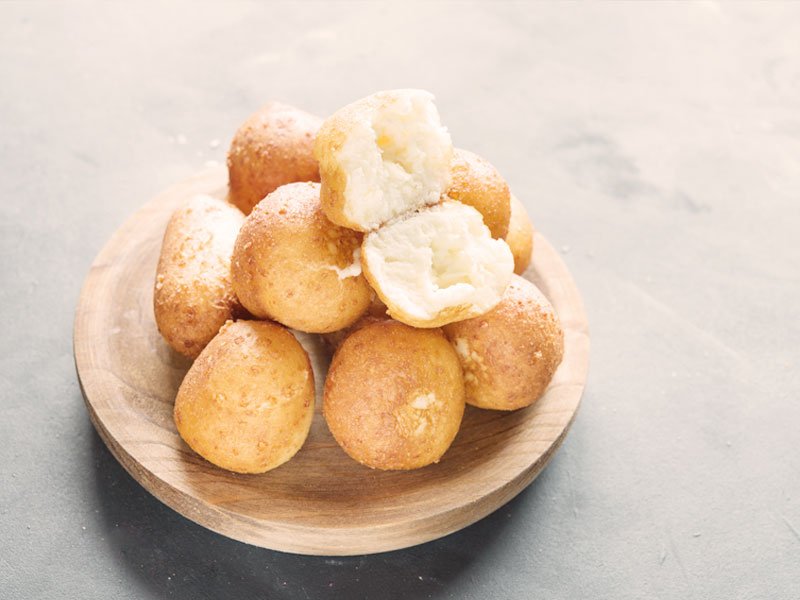
Unique Colombian Sports
There are many traditional sports practiced in Colombia. The most widely played and watched sport is undoubtedly football (soccer), followed by cycling thanks to the success of young Colombian cyclists during the last years in global competitions.
However, there are some non-traditional but very popular sports played in Colombia:
1. Tejo
Colombia’s national sport. It’s derived from an indigenous practice called Turmequé. Tejo is often played in small towns and popular neighborhoods of the main cities.
The most exciting part of this popular sport is that it involves fireworks, an iron weight, and beer.
What? fireworks, an iron weight, and beer…
Yes, you read well!
How is Tejo played?
The game takes place between two teams; each team member has an iron puck called a “Tejo,” which they throw at a clay-filled box at each end of the Tejo court.
The game aims to get the puck inside, or as close to, the circular pipe as possible, or make the gunpowder explode (points awarded accordingly).
Playing the game is free, but groups playing the game must purchase a crate of beer to consume while on the court. Usually, the losing team pays for the beers
2. Rana
The “rana” game comes in a medium-sized box with metal frogs that sit at the top (That’s why the name, frog in Spanish is “rana”)
It has a series of holes that are beside the frogs. The game’s main objective is to land the metal rings inside the mouth of the three metal frogs that sit at the top, but you also get points if the rings land in other holes.
3. Bolo Criollo
Let’s say “Bolo Criollo” is the Colombian version of American bowling to make it easier to explain.
However:
- It’s not an indoor sport
- It doesn’t include colorful lighting or disco lights
- It doesn’t have a food stand
- You don’t need to wear specific shoes
- It doesn’t include 12 pins
- It doesn’t include a 15lb bowling ball
You might be thinking, how do we say it’s a version of American Bowling?
Yes, we know it doesn’t sound similar, but that’s the closest we can explain what this popular sport is about.
Bolo Criollo is an outdoor sport. The “field” is usually adorned by beer advertisements (typically popular sports include these advertisements!). It consists of three pins (instead of 12), placed in a line behind one another and a small rounded rock.
By the way, this game also includes a “mandatory” drinking rule…
Check out the video below and see why we say it is the Colombian version of American Bowling!
Unique Colombian Christmas and New Year Traditions
Colombians celebrate Christmas on an entirely different level. It’s a month-long celebration, not just a single day or a weekend.
The Christmas season is the most important holiday in Colombia. It starts on the 7th of December (The Day of the Little Candles) and ends on the 6th of January (The Three Kings’ Day).
Since Colombia is a family-oriented country, Christmas is that time of the year where extended families gather. During this period, most people are on school and work holidays. People go back to their hometown or travel to a holiday destination with their relatives.
The festivities begin on the 7th of December with the Día/Noche de las Velitas (Day or Night of the Candles). On December 16, events continue with “La Novena de Aguinaldos”. During nine consecutive days, families come together to eat traditional Colombian food, sing carols (“villancicos”) and recite a set of prayers.

Christmas in Colombia is celebrated on the eve of the 24th of December. Families gather for dinner just before midnight, and the presents are opened at 12 o’clock. On the 25th of December, Christmas day, families also gather for lunch, bbq, or other outdoor activities.
After Christmas day, Colombia celebrates “The Day of the Innocent Saints” on the 28th of December. This is a day dedicated to playing practical jokes with friends and family.
The next big important celebration is New Year’s Eve on the 31st of December. It’s also a family celebration, but friends typically meet up for after-parties around the city and towns after midnight.
Then the Christmas season officially ends on the 6th of January, The Three Kings’ Day. Although there is no specific celebration, this is when people return from their family holidays to their home or work.
Unique Colombian New Year Traditions
Did you think Colombians just celebrated New Year’s eve with a nice family dinner?
You know Colombians like to do things a bit differently, and we need to add some fun to all traditions.
Here, ten unique Colombian New Year Traditions:
1. Eating 12 grapes at midnight.
As the clock strikes midnight on New Year’s Eve, our tradition is eating one grape per chime – so 12 grapes in all – and make a wish each time you eat a grape!
2. Wearing yellow underwear on New Year’s Eve
Men and women wear brand-new pairs of yellow underwear for an upcoming year full of luck, love, and happiness. Some people even wear them reversed before midnight, then turn them around afterward, to “maximize the effect.”
3. Filling your pockets with lentils
People fill their pockets with lentils for the following year full of abundance.
4. Taking your suitcase around the block
This one is fun! If you want a new year full of travel and adventure, then you’ll need to have your suitcase ready at midnight ( it can be empty). Once the clock strikes midnight, you take it and go for a stroll around the block.
5. Cash in hand at New Years
For financial security and stability in the upcoming year, make sure you have on hand some hard cash.
6. Cleaning your house on the 31st of December
Colombians are, in general, very clean and tidy. On the 31st of December, people clean the house to swipe all negative thoughts, bad memories, and bad energies away.
7. Quemar el año viejo (Burning the ‘old year’ doll)
Families make a doll-like doll stuffed with fireworks, named “Año Viejo.” At midnight, Colombians set fire to the doll, which duly explodes and burns, symbolically burning the Old Year and all it represents.
8. Put your right foot forward
For a New Year full of positive vibes and to ensure that you will make nothing but good decisions, then the first step you should take after midnight will be with your right foot.
9. Wheat on the table
Traditionally, the dinner table is decorated with shafts of wheat – generally, 12 is the right number. It is said that, by doing this, you will have a bountiful New Year, full of abundance.
10. Cinco pa’ las doce song
The most popular song for New years. This is a very old, popular song. This song is played at all the radio stations, family and friends gatherings, and even on some TV channels.
Cinco pa’ las doce, means five minutes to twelve o’clock.
Learn the song in the video below. It has the lyrics for you to practice!
Do you have any other unique Colombian traditions you want to share with us? Drop us a line!
We hope you have enjoyed the articles we wrote this year. We enjoyed writing them!
Don’t forget to follow our social media and read our bi-weekly blog
Happy New year!


